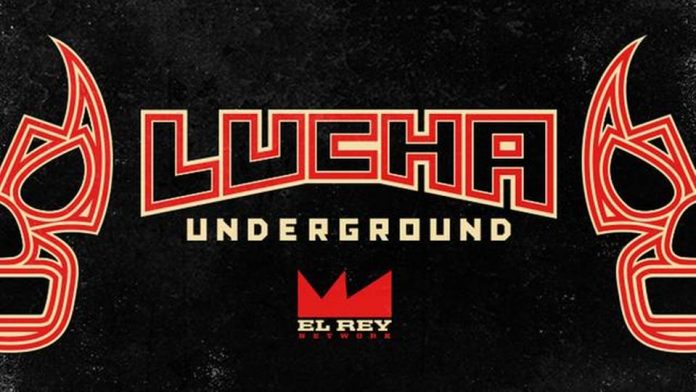
The unique era of 2025 continues with news that the TKO corporation, the umbrella organization that resulted from the WWE and UFC merger, bought the rights to Lucha Underground, according to a report by Fightful Select. Lucha Underground was the cult hit that aired on the El Rey Networked for 4 seasons after its initially launch in 2014, with its association with the AAA in Mexico. The show brought an out-of-the-box approach to its presentation with eccentric backstage angles, but its in-ring presentation, which brought lucha libre to an American platform years after it had last been seen to any measurable degree, created a fan following, especially among the diehard fan base of the pro wrestling genre.
As I wrote at the time, the problem was, that the lucha underground concept was simply a television show, not a professional wrestling company. Granted, the off-the-wall storylines with backstage segments weren’t my cup of tea, but the reason I put very little stock in the prospects of the project was that it didn’t have a way to generate enough revenue to truly get off the ground to any significant degree. Infamously, Lucha Underground offered long-term contracts to talent and then some of those performers were stuck in sports entertainment purgatory because they couldn’t explore other options while under the deal, but the Lucha Underground organization had a period of time where it wasn’t producing new content, with its future up in the air.
It’s important to keep in mind the scope of what the original brand was, several episodes were filmed within the span of a few days, with a studio audience being brought in to “play the role” of a wrestling crowd. Sure, Lucha Underground was probably popular enough at one point to draw crowds on the west coast, particularly with the strong Hispanic demographics in those areas, but there was never a test run to truly gauge how the brand would’ve drawn from a live event prospective because the project never ran a show that required tickets so if fans would or wouldn’t have been willing to pay to attend, or at what ticket prices to get an estimate of a typical gate would be completely hypothetical.
Even if you look at the logistics of the concept as strictly a television show, which would then rely on ad revenue and sponsors to make a profit, the El Rey Network simply didn’t have enough clearance on most cable systems to be able to sell that commercial time for nearly enough cash to cover production costs, along with wrestling contracts.
Basically, the show had a premise and a distribution channel, but wasn’t able to monetize it in a way that was sustainable for any extended period of time.
With the launch of All Elite Wrestling the year after it folded, it’s difficult to expect a studio project to be able to secure any top-tier talent in the modern era of the industry. Granted, JBL became involved in AAA last year, and of course, he’s known as a slick financial guy, but that would probably be an effort designed to expand the pure Mexican brand, not a spinoff. It should be noted that while AAA was affiliated with Lucha Underground when it started a decade ago, any notion of a United States expansion based on the momentum of the El Rey exposure was probably misguided and never materialized.
So, why would the WWE buy the rights to the Lucha Underground name?
This could be something as simple as buying the video library because of the amount of footage that involved either current or former WWE talent. Penta just made the jump to WWE last month and he was one of the standout performers on El Rey. When Rey Mysterio left WWE for a few years, one of the places that he worked was for Lucha Underground. Ricochet, Chelsea Greene, and Rey Fenix, who is expected to join the WWE after his All Elite deal expires, were among those that wrestled for Lucha Underground.
If I had to guess, I’d say that the tape collection was the primary purpose of the purchase. Don’t get me wrong, I understand that it’s possible that the project could be brought back under the WWE banner, but realistically, how much cache does Lucha Underground really have with the current WWE audience? Again, keep in mind, the El Rey Network had relatively minimal television clearance and folded almost seven years ago so how many fans of the modern product are aware of what Lucha Underground was?
Sure, it’s possible with the rights to the name purchased that the WWE could repackage a Lucha Underground concept with a WWE spin on it, but why wouldn’t they just create their own brand instead of bringing back a niche concept that someone else started a decade ago? Let’s not forget, the WWE, while more flexible under the Triple H regime, is still a corporation that looks to own the rights to as much of its content as possible, and truth be told, it would probably be a wiser decision to start something fresh than to try to recapture the brief momentum that Lucha Underground had ten years ago.
Assuming that this might be an indication that WWE has some sort of place for a specific lucha project, there are several questions that would be key to determining if there was any chance of long term success. First and most importantly, even with the legitimate globalization efforts of the TKO corporation under the direction of Nick Khan, I still don’t think a pure lucha libre concept will get the push of the WWE machine, it’s just a style that is too counterculture to the basic fundamentals of the WWE product. There’s nothing wrong with that either, it’s just to point out that despite the massive reach of the WWE, it’s not realistic to be able to tailor programming to the entire world.
Regardless of if it would be for a new WWE product or the relaunch of Lucha Underground, where and when the shows would be taped would be one of the biggest pieces of the puzzle to determine its chances of success. We saw several times that attempting to tape extra content after one of the main shows goes off the air often led to either diminished crowds as people weren’t going to stay late for a secondary show or just a flat reaction because of everything else already presented at the taping prior in the night. The doomed ECW on Sci-Fi tapings were probably the best example of how that format doesn’t create a good atmosphere for a television taping. Furthermore, there was actually a mostly unknown attempt to tape a short-lived WWF lucha show during the the 41-episode run of WWF Super Astros, the company’s lucha experiment that aired on Univision, the largest Spanish language station in the United States, from 1998-1999. The program actually had names like Super Crazy, El Hijo Del Santo, and others, but was taped in front of WWF crowds that didn’t have any idea who the performers were, particularly since there was before computers were household items so there were very limited resources about lucha libre during the era.
Of course, the publicly-traded organization looks to maximize its revenue streams for its stockholders, but there’s a different between marketing specific lucha libre stars and trying to establish or showcase the style as a whole. The WWE, because of its attempt to target the broadest demographic possible, wants to promote lucha performers, not the full-scale lucha style. That’s why I don’t think even the purchase of the Lucha Underground rights is anything beyond the acquisition of the tape library. All things considered, the amount of potential revenue that would be on the table for a full lucha show with its own set of television tapings, Mexican stars under contract, and the production costs, probably wouldn’t be worth the possible return on investment when there’s a lot more money to be made in foreign markets from the major gate revenue made from bringing signature pay-per-views to different countries.
What do you think? Share your thoughts, opinions, feedback, and anything else that was raised on Twitter @PWMania and Facebook.com/PWMania.
Until next week
-Jim LaMotta
E mail [email protected] | You can follow me on Instagram, Facebook, & Threads @jimlamotta89






